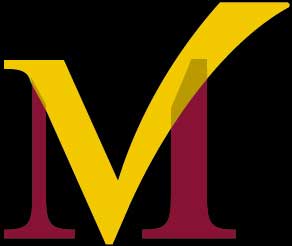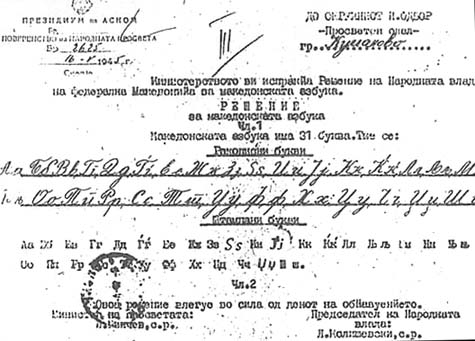The Macedonian language is spoken in the Republic of Macedonia and also outside its borders, in those parts of Macedonia which following the Balkan Wars were included in the neighbouring countries – Greece, Bulgaria and Albania – and also among Macedonian expatriates in Europe, USA, Canada and Australia. Macedonian today is the mother tongue of about two million people. On the territory it now occupies, and which was larger in the past, the Macedonian language developed from the speech forms of the Slav tribes, who, following the disintegration of the Proto-Slavonic community, came further to the south, to the Balkan Peninsula.
The Slavs penetrated deep into Greece and Albania. But, with the course of time, they withdrew or were assimilated, and the territory they originally settled has been considerably reduced. In Albania, Macedonian is spoken not only in the several Christian villages in the Prespa region, but also in the Macedonian Moslem villages in Golo Brdo and Kjuks, as well as in Albanian towns. Until recently, in northern Greece there was a numerous Macedonian population settled up to the line extending from the River Bistrica to the west towards the Salonica plain. But here, too, the Macedonian population has been considerably reduced in numbers in the last few decades owing to well-known political events. The language of the Macedonian Slavs settling in the new environment retained the Proto-Slavonic language type for a long time, as proven by Old Church Slavonic, a standard created upon a Macedonian basis in the second halt of the 9th century. In its further development, however, like the Bulgarian language and, to a lesser extent, south-eastern Serbian speech-forms. it underwent fundamental structural changes under the influence of the Balkan language environment.
Slavonic literacy in Macedonia appeared at the end of the 9th century A.D. The activity of the Ohrid Literary School, founded by St. Clement, has left a permanent mark on the language of that literacy, characterized, especially in its vocabulary, by a consistent continuation of the language of the first Slavonic translations. The first alphabet, the Glagolitic, was widely used in Macedonia until the llth century. From the 12th century onward, there are considerable deviations in Macedonian texts from the Old Church Slavonic standard. In the 14th century, the use of a Serbian variant grew in importance, being predominant in Macedonian literacy until the 18th century. Elements of the Macedonian popular language of the modern style were gradually introduced into the language of church literature starting from the end of the 16th century.
This process may be seen particularly in what are known as “damaskins”, translations of the sermons of the Greek writer Damaskin Studite (16th century); this was by way of being a certain preparation for the introduction of the Macedonian vernacular into literary use, which took place at the beginning of the 19th century, in the books of Joakim Krchovski and Kiril Pejchinovik. However, even though books were written in the vernacular in the first half of the 19th century, there was no expressed awareness of the need to establish a general literary standard. The use of the vernacular was regarded as a lower style as compared to Old Church Slavonic, or, in the southern regions of Macedonia, to Greek, which were considered to be elevated style.
The question of a literary standard was first considered in the 1850s, when the Macedonian bourgeoisie, together with the Bulgarian bourgeoisie, came into conflict with the Constantinople Patriarchate over the use of Greek in churches and schools. This marked the commencement of the Macedonian revival, which was expressed in two directions: in the direction of an integration of all Slavs under Turkish domination and in the direction of a completely independent national development. Hence the question of the literary standard at the time was posed in two contexts: on the one hand, some took the standpoint that a common literary standard should be established for Bulgarians and Macedonians in such a way that it would equally include Bulgarian and Macedonian linguistic characteristics; on the other hand, there was the standpoint of those known as “Macedonists”, who pointed out that the Macedonians, as a separate people, should build their own separate literary standard. Both standpoints agreed in their opposition to the introduction of the Bulgarian literary standard into Macedonia.
This position gave rise to the movement supporting the publication of special textbooks for Macedonian schools, in which the language essentially continued the written Macedonian tradition to date. All this was an expression of the fact that among the Slavs in Turkey two national and cultural centres were established, as was borne out by subsequent historical developments. The unfavorable historical circumstances at the time did not provide opportunities for accomplishing more in the building of a Macedonian literary standard. A significant contribution to the analysis of this question was made somewhat later by Krste P. Misirkov’s book “On Macedonian Matters” (Sofia, 1903), which was a kind of synthesis of all previous attempts at establishing Macedonian literacy, and pointed to the possible subsequent directions in the national and cultural development of the Macedonian people, where Misirkov considers the establishment of a Macedonian literary standard a task of prime importance. He was the first to analyze the question of its popular base, stating that it should rely on central Macedonian speech-forms.
What Misirkov formulated with regard to the building of the Macedonian literary standard approached its realization in the period following the First World War, in spite of the fact that after the Balkan Wars the Macedonian people was divided among the neighboring Balkan states. It was of crucial importance that the Macedonian people’s aspirations towards liberation were widely supported by the progressive movement. In the 1930s, literary activity in Macedonian gained new strength. This was a time of a closer association of Macedonian intellectuals on a common cultural platform, which greatly encouraged the development of supra-dialectal linguistic links. The process was hampered by the ban on the use of the Macedonian language in public life (in education, the press, etc.), but could not be halted. It gained momentum in the years of the Second World War with the activity of the national liberation movement.
During the war, a significant and extensive collection of written material in Macedonian was produced, and towards the end of the war regular brigade and other newspapers and journals were published (Ilindenski pat, Mlad borec, Nova Makedonija, etc.). Although this material was not linguistically standardized, it quite clearly reflected the desire to write in a common standard form based on central speech-forms. All this made possible a prompt solution to the question of the standard in the very first months following the liberation, when only a slight standardization of the literary language and its orthography had to be carried out on the basis which had already been established in its previous development. The Macedonian language was proclaimed the official language of the Republic of Macedonia during the war, at the First Session of the Antifascist Assembly of ‘the National Liberation of Macedonia, held on August 2, 1944, in the Monastery of St. Prohor of Pchinja. Its standardization was completed with the adoption of the alphabet (May 3, 1945) and the orthography (June 7, 1945) on the proposal of the Language and Orthography Commission. In the years of its free life which followed it swiftly grew into a fully-formed modern standard literary language.

Virtual Macedonia
Republic of Macedonia Home Page
Here at Virtual Macedonia, we love everything about our country, Republic of Macedonia. We focus on topics relating to travel to Macedonia, Macedonian history, Macedonian Language, Macedonian Culture. Our goal is to help people learn more about the "Jewel of the Balkans- Macedonia" - See more at our About Us page.
Leave a comment || Signup for email || Facebook |
History || Culture || Travel || Politics















